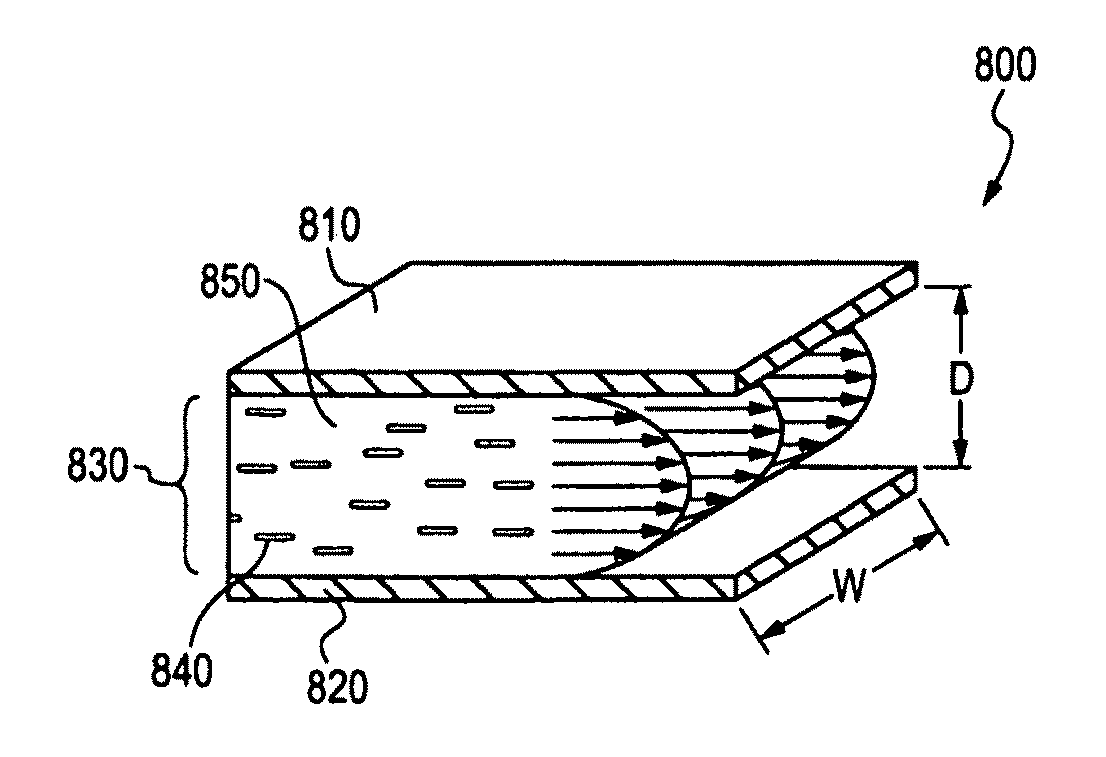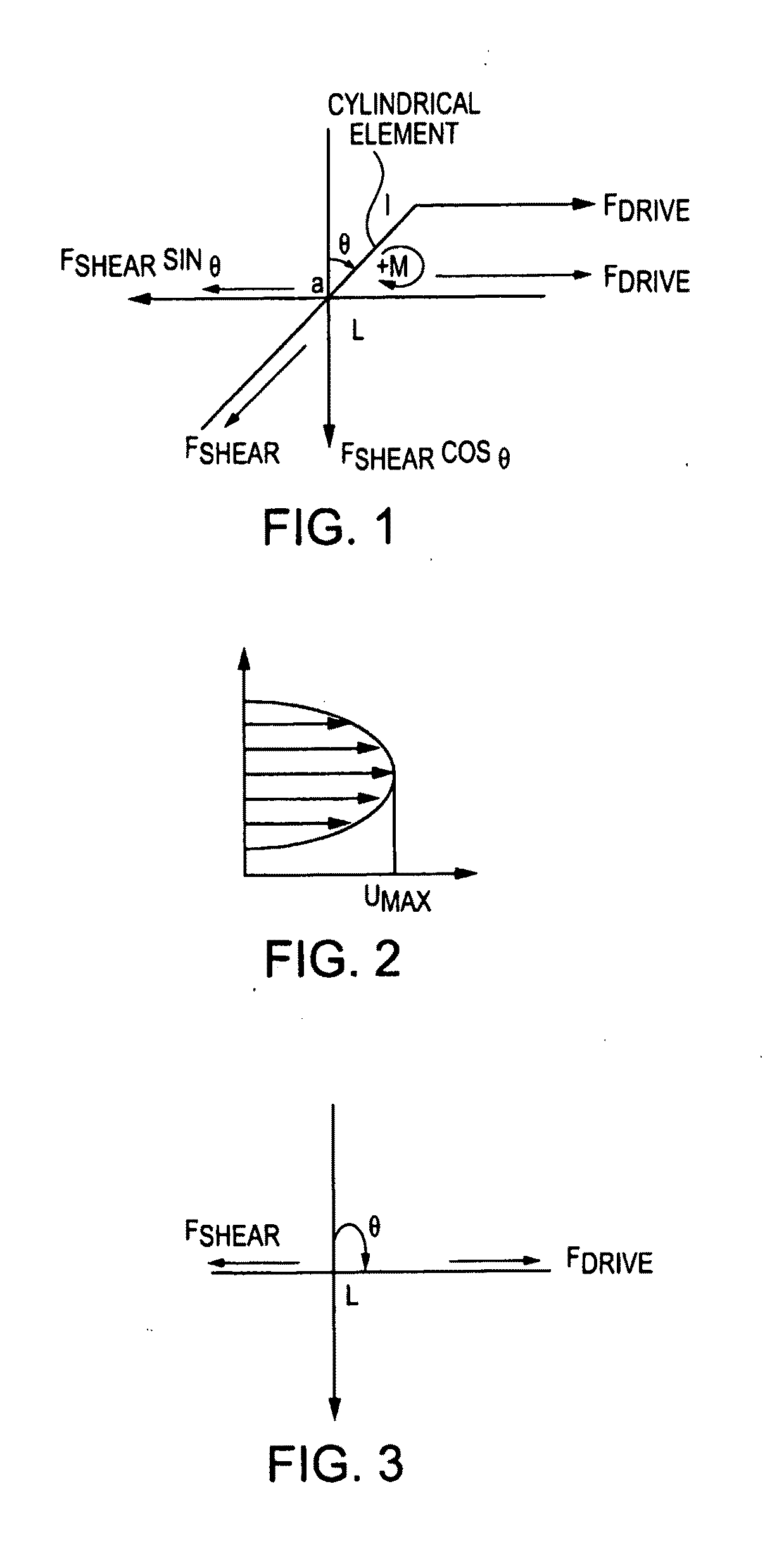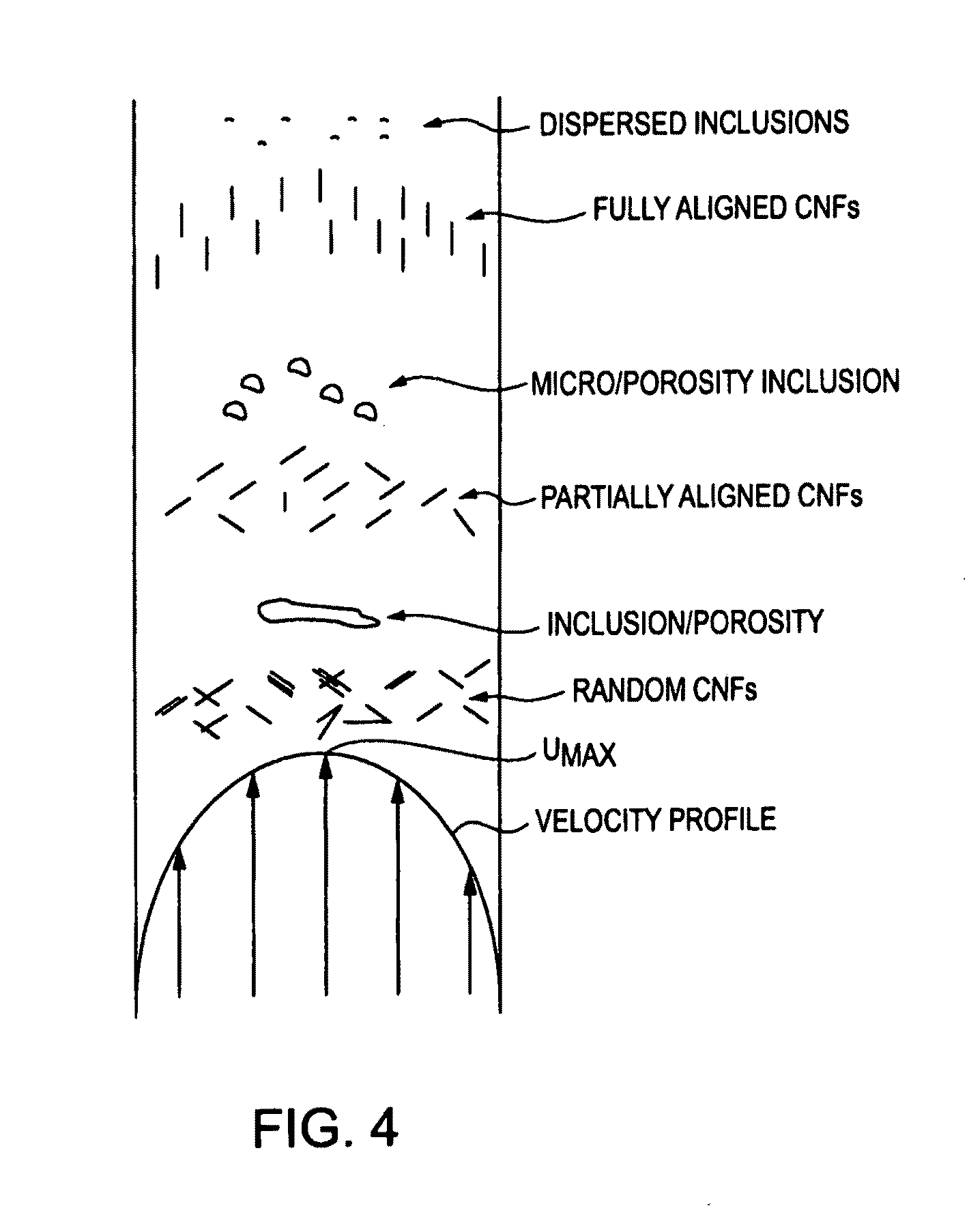High strength composite materials and related processes
a composite material and high-heavy technology, applied in the field of composite materials, can solve the problems of poor dispersion of nanotubes in the matrix material, poor alignment and orientation of nanotubes in the matrix, short length of nanotubes, etc., and achieve the effect of high strength and high strength
- Summary
- Abstract
- Description
- Claims
- Application Information
AI Technical Summary
Benefits of technology
Problems solved by technology
Method used
Image
Examples
Embodiment Construction
[0036]The present invention and preferred embodiments relate to incorporating or imbedding, dispersing and orienting nanostructures such as nanofibers and / or nanotubes (NF / NT) in glass, fused silica(s), and metal matrices and other materials to produce exceptionally strong nano-composite glass fibers, metal wires, sheets, plates, and structures with highly enhanced physical, thermal and electrical properties. In certain embodiments of the invention, the nanofibers and / or nanotubes are highly aligned or otherwise uniformly oriented in the material matrix.
[0037]The present invention provides in a broad aspect, a unique and ready strategy to disperse, disentangle or separate if necessary, and / or selectively align a collection of nanostructures in a matrix material. The strategy transforms the combined matrix material and nanomaterials into a flowable state, and then induces the combination to then flow. Flow can occur within nearly any type of channel, duct, or enclosure. It is contemp...
PUM
| Property | Measurement | Unit |
|---|---|---|
| Temperature | aaaaa | aaaaa |
| Temperature | aaaaa | aaaaa |
| Temperature | aaaaa | aaaaa |
Abstract
Description
Claims
Application Information
 Login to View More
Login to View More - R&D
- Intellectual Property
- Life Sciences
- Materials
- Tech Scout
- Unparalleled Data Quality
- Higher Quality Content
- 60% Fewer Hallucinations
Browse by: Latest US Patents, China's latest patents, Technical Efficacy Thesaurus, Application Domain, Technology Topic, Popular Technical Reports.
© 2025 PatSnap. All rights reserved.Legal|Privacy policy|Modern Slavery Act Transparency Statement|Sitemap|About US| Contact US: help@patsnap.com



